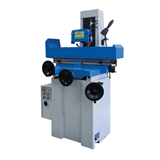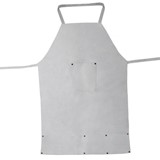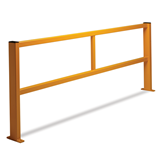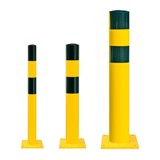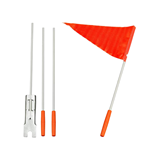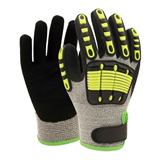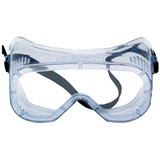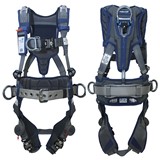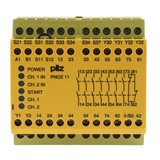Discover Australian safety bollard standards & compliance. Learn impact ratings, legal requirements & installation tips to keep your site safe.
Key takeaways
- Standards: Australian safety bollards must comply with AS/NZS 1170.1 (Structural design actions) and AS 2890.1 (Parking facilities design), ensuring impact resistance and appropriate placement.
- Compliance: Local councils and state regulations mandate safety bollard installation in public and private spaces, with penalties for non-compliance.
- Impact ratings: Bollards are rated by impact resistance—common ratings include low impact (pedestrian areas) to high impact (vehicle crash protection), based on vehicle mass and speed.
- Materials: Steel and concrete bollards dominate, with galvanised or powder-coated finishes for corrosion resistance, meeting durability standards.
- Installation: Proper installation requires adherence to spacing, depth, and foundation standards for effective impact absorption.
- Market trends: Demand for compliance-focused, durable, and visually integrated bollards in Australia is rising, driven by workplace safety laws and urban development.
- Compliance stats: According to Safe Work Australia, 28% of workplace incidents involving vehicles could be mitigated with effective bollard systems.
Introduction
Purchasing safety bollards in Australia involves more than just picking a sturdy post. These essential protective barriers play a crucial role in pedestrian safety, asset protection, and vehicle impact mitigation across industrial sites, retail precincts, and public spaces. However, to ensure your bollards provide the intended protection and meet legal obligations, understanding the specific Australian standards and compliance requirements is critical.
This comprehensive guide will walk you through the essential safety bollard standards and compliance frameworks relevant in Australia. Whether you’re a facility manager, construction project lead, or procurement officer, this article equips you with the actionable knowledge needed to make informed buying decisions that balance safety, regulatory compliance, and cost.
Understanding Australian safety bollard standards
Key standards to know
When buying safety bollards in Australia, you need to be familiar with the following standards:
- AS/NZS 1170.1: Structural design actions
- This standard covers the design loads safety bollards must withstand, including vehicular impact forces. It ensures bollards are engineered to absorb or deflect impact without catastrophic failure.
- AS 2890.1: Parking facilities – Part 1: Off-street car parking
- Specifies safety bollard placement and height requirements for parking areas to protect pedestrians and infrastructure from vehicle encroachment.
- AS/NZS 3850.1: Installation of steel bollards
- Details installation methods to guarantee bollards maintain structural integrity during impacts.
Impact resistance classifications
Safety bollards are rated by their capacity to withstand impact, typically defined by:
- Low impact: Designed for pedestrian areas and light vehicles, generally resisting impacts up to 5,000 newtons.
- Medium impact: Suitable for commercial vehicles and delivery zones, resisting impacts up to 20,000 newtons.
- High impact/crash rated: Used in high-security or industrial environments, capable of stopping vehicles weighing over 1,500 kg travelling at 50 km/h or more.
Always request manufacturer certification that their bollards meet these impact ratings according to the relevant Australian standards.
Compliance requirements for safety bollards in Australia
Legal and regulatory framework
- Local government regulations: Councils often mandate bollard installation in pedestrian-heavy zones, construction sites, and roadworks. Non-compliance can lead to fines exceeding $5,000.
- Workplace health and safety laws: Under Safe Work Australia guidelines, employers must provide safe environments where vehicle-pedestrian interactions are controlled.
- Disability access laws: Compliance with the Disability Discrimination Act (DDA) requires bollards to allow wheelchair and mobility aid access without obstruction.
Penalties for non-compliance
Failing to meet safety bollard standards can result in:
- Fines and legal action from local authorities
- Increased liability in workplace injury claims
- Insurance claim rejections in case of accident damage
Materials and design considerations
Common materials
- Steel bollards: The most common due to strength and flexibility. Galvanised steel with powder coating is standard to resist corrosion in Australian climates.
- Concrete bollards: Heavy-duty and highly impact-resistant but less flexible in impact absorption. Often used in industrial zones.
- Plastic and composite bollards: Used mainly for low-impact zones; not suitable for crash protection.
Design features to consider
- Reflective tape or paint for visibility at night
- Removable or collapsible bollards for access control
- Aesthetic integration with urban design for commercial areas
Installation best practices
Proper spacing and placement
- Bollards should be spaced to prevent vehicle access but allow pedestrian movement, typically 1.2m to 1.5m apart.
- Placement must avoid creating trip hazards and comply with AS 1428 for accessibility.
Foundation and anchoring
- Concrete footings should extend at least 600mm deep with adequate reinforcement.
- Installation must follow manufacturer guidelines and be performed by qualified contractors to ensure compliance and effectiveness.
Market trends and outlook
- Increasing urbanisation in Australia is driving demand for compliant safety bollards in public spaces.
- Workplace safety reforms are accelerating adoption of crash-rated bollards in logistics, warehousing, and manufacturing sectors.
- Emerging materials and smart bollards with sensors and lighting are gaining traction for enhanced safety and security.
Frequently asked questions (FAQs)
Q: Are there mandatory certifications for safety bollards in Australia?
Yes, safety bollards should be certified to comply with AS/NZS 1170.1 for structural strength and impact resistance. Always request test certificates from suppliers.
Q: How do I know which impact rating is suitable for my site?
Assess the vehicle types and speeds in your area. For pedestrian zones, low impact is sufficient. For areas with trucks or forklifts, medium or high impact ratings are essential.
Q: Can safety bollards be installed on existing concrete surfaces?
Yes, but installation methods vary. Core drilling with chemical anchors is common. Ensure installation meets AS/NZS 3850.1 for structural integrity.
Q: Do safety bollards need maintenance?
Yes. Regular inspections for corrosion, damage, and visibility are important. Maintenance extends service life and compliance.
Q: Are there any rebates or government incentives for installing safety bollards?
Occasionally, workplace safety grants may assist. Check with Safe Work Australia and local councils for current programs.
Conclusion
Buying safety bollards in Australia requires a careful balance of compliance, quality, and cost. Understanding the key standards—particularly AS/NZS 1170.1 and AS 2890.1—is essential to selecting bollards that protect people and assets effectively. Always ensure proper installation and maintenance to meet regulatory obligations and maximise safety outcomes.
With urban areas becoming busier and workplace safety regulations tightening, investing in compliant, durable safety bollards is both a legal responsibility and a smart business decision. Use this guide to confidently navigate your next purchase and keep your site safe and compliant. For a detailed breakdown of safety bollard costs, installation fees, and hidden expenses, check out Safety bollard costs in Australia: price guide, installation fees and hidden costs explained. This resource will help you budget effectively and avoid surprises.



